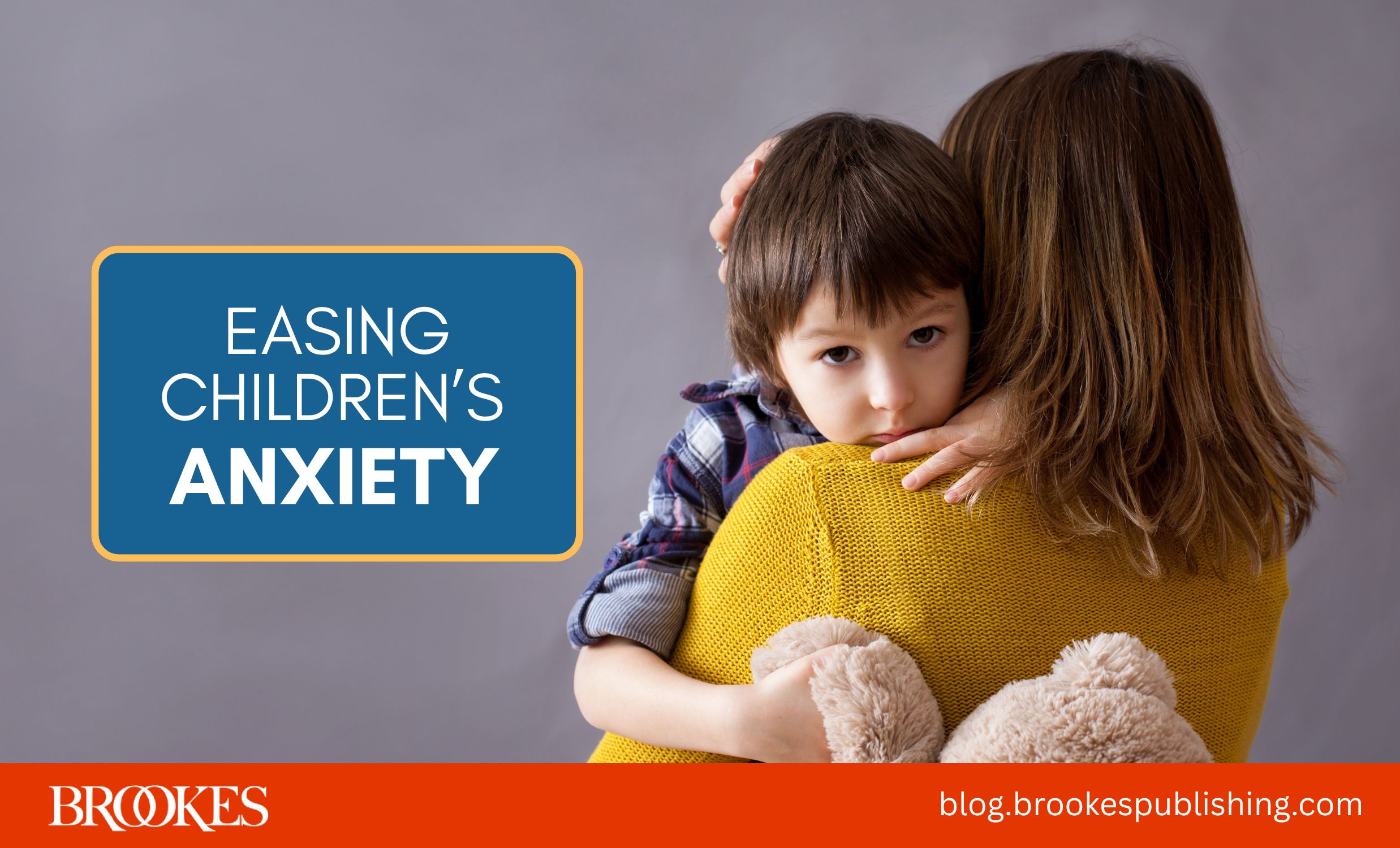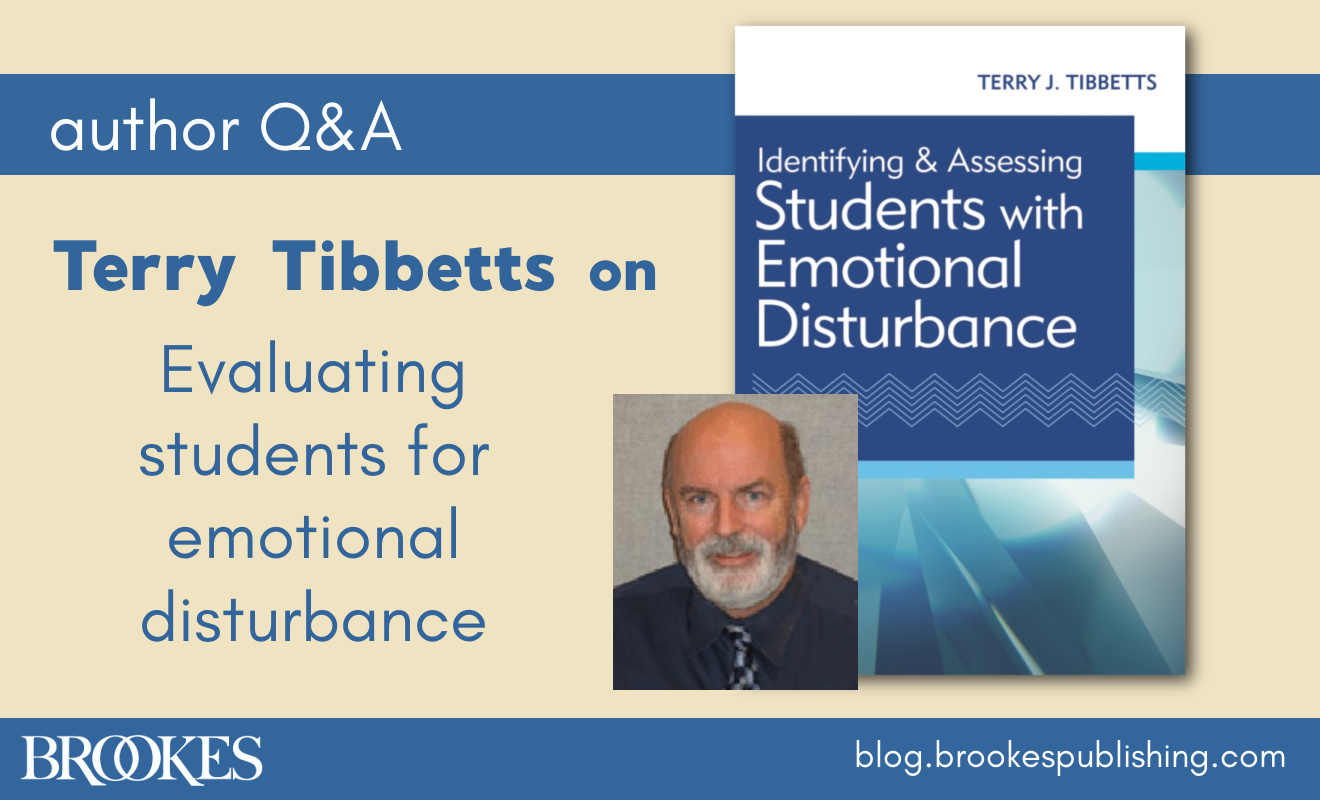Find out in this Q&A with the author of Identifying and Assessing Students with Emotional Disturbance
BONUS: Teachers report receiving little relevant information for use in planning instructional programs for students with emotional disturbance. Learn about some places to start in this free download on Placement Characteristics.
In your new book, you make the point that "emotional disturbance" is classified differently in an educational setting than in a clinical setting. How so?
Unlike the clinical approach, which looks at a myriad of intrapersonal and environmental events, the educational definition of emotional disturbance focuses on one key question—Does the emotional state of the student result in an adverse effect on that student's educational performance? If not, then the student is not considered to be emotionally disturbed from an educational perspective.
As an example, consider a child who is considered from a clinical perspective to have a severe anxiety disorder. Obviously, early and intensive clinical intervention and treatment should be provided to that child. However, for some children with such disorders, the educational setting does not generate feelings of fear and anxiety. Instead, the routine, structure, and predictability of the classroom day may actually reduce the level of anxiety the child feels. The child is able to demonstrate grade-level competence in his or her academic abilities, and to exhibit appropriate social interactions with the teacher and/or other students.
From the educational perspective, such a child would not be considered to be emotionally disturbed, despite what the child may experience or demonstrate outside of the school setting.
What is the primary goal of identifying students with emotional disturbance in an educational setting?
The purpose of the federal educational law for students with exceptional needs is to identify and to serve students who require special educational instruction and services to ensure their right to an appropriate educational program that will meet those unique needs. The law identifies 13 separate impairments that a school district is to consider when determining eligibility for special education. One of those conditions is emotional disturbance.
What is the difference between "social maladjustment" and "emotional disturbance"?
From an educational perspective, emotional disturbance is considered to be a handicapping condition that may qualify a student for special education services. By contrast, social maladjustment is considered to be a separate set of volitional behaviors that do not qualify a student for special education services, even though they may adversely affect his or her educational program. Such students are often handled by the disciplinary arm of the educational system.
Further, placing emotionally disturbed students and socially maladjusted students into the same special education classroom programs often results in major problems with both behavioral management and academic learning.
What are the characteristics of emotional disturbance in a student?
Federal law defines emotional disturbance as a condition exhibiting one or more of the following characteristics over a long period of time and to a marked degree, which adversely affects educational performance:
(1) an inability to learn which cannot be explained by intellectual, sensory or health factors
(2) an inability to build or maintain satisfactory interpersonal relationships with peers and teachers
(3) inappropriate types of behavior or feelings under normal circumstances
(4) a general pervasive mood of unhappiness or depression, or
(5) a tendency to develop physical symptoms or fears associated with personal or school problems.
What are the components of assessment for emotional disturbance in educational settings?
Any comprehensive psycho-educational assessment will review the educational history of the student, previous interventions (including any mental health involvement), developmental and health history, and current skills in cognition, language, academic, and adaptive behavior.
The evaluator will also interview school staff such as teachers, aides, and playground supervisors, as well as the parents and other significant caretakers in the student's life. When possible, the evaluator may make a home visit to observe the student.
The evaluator will also assess the emotional functioning levels of the student through the use of objective and/or subjective measures of personality, and an extensive clinical interview with the student.
Unfortunately, many educational assessors limit their evaluation of the student's emotional functioning level to a behavior rating scale, and this is the single biggest problem with assessments of emotional disturbance that I find in the educational domain. Whether because of their limited skills and knowledge base in personality assessment, or because of the ease of simply handing out behavior scales for others to complete, the result is a determination based on very limited data. As a result, the assessments are often inaccurate or incomplete.
Once a student has been identified as qualifying for special education services for emotional disturbance, what are the critical next steps?
The critical next step is placing the student into an educational program that will be effective in addressing the academic, behavior, social, and emotional needs of the student and provide him or her with an appropriate set of services. This is often difficult to implement because of the lack of educational resources provided to this population.
Classroom programs for students with emotional disturbance have to be highly individualized for the unique needs of each student, and teachers should have skills in curriculum adaptation, behavior management, and classroom organization. Teachers are coaches, managers, behavior analysts, crisis interventionists and therapists, and they need to be backed up with qualified aides and support staff.
Unfortunately, this is seldom supported by district administrators; it is very rare to find a highly functioning and effective classroom for students with emotional disturbance. In my more than 30 years in working with this population, I have not seen more than 3–4 ED classrooms that I would consider to be model programs.
What sort of support from school districts do teachers need to properly support their students?
Some school districts have done an excellent job in training general education teachers how to handle behavioral outbursts of students with emotional disturbance before such students are placed in their classroom. Programs such as Crisis Prevention Intervention (CPI) provide teachers with a set of skills and competencies that allow them to intervene seamlessly and effectively. Other districts have not been as proactive.
However, the volatility and intensity of such student outbursts has become an increasing topic of discussion as more episodes of students with weapons have occurred in the past few years. It is both unrealistic and unfair to expect general education teachers to be able to handle volatile students as a part of their everyday responsibilities and duties.
When a decision is made to place a student with an externalizing emotional disturbance in a general education classroom, it is the responsibility of the district to provide sufficient support for the student to be successful in that setting. This requires that there be a functioning professional team for that student. The team should include a school psychologist, who can provide intervention support and violence risk assessment, as well as a behavior specialist who can provide classroom support and suggestions for increasing positive student behavior.
Much of this support should include working with the teacher within the classroom setting to demonstrate suggested interventions. For example, if the behavior specialist suggests a visual chart for transitional activities, he or she should work in the classroom with the teacher to implement the intervention, and to address any complications or difficulties that may arise.
You distinguish between "internalizing" and "externalizing" types of emotional disturbance. Can you clarify the difference?
In general, students with emotional disturbance can be categorized as having predominantly internalizing or externalizing behavioral difficulties. Within the regular classroom setting, the majority of students with emotional disturbance tend to be of the internalizing type, and present minimal potential for disruption to the classroom or other students. In fact, when asked, many teachers fail to identify these students as actually having an emotional disturbance.
Students with internalizing difficulties often appear depressed, anxious, withdrawn, or otherwise overcontrolled. Students with externalizing difficulties, by contrast, more often appear undercontrolled, and demonstrate defiant, aggressive, and non-compliant behaviors. The individual interventions used with these students will vary depending upon what category of behaviors they tend to show.
What types of classroom interventions are appropriate for students with internalizing difficulties?
For students with predominantly internalizing disorders, the teacher should provide them with opportunities to improve their sense of connectedness, mastery, and control. Specific social skills can be targeted, such as initiating conversations with peers, building social reciprocity abilities, and expressing their feelings in a supported environment. The use of art can be very valuable in this regard as an expressive medium.
The teacher needs to look for providing opportunities for student to feel that they are valued and important, that they can express themselves freely, that they can accomplish the things that they set out to do, that they can control themselves when filled with pressure and stress, and that they can make sense out of what is occurring in their lives. Above all, the teacher should operate as a role model that students can use in attempting to master these tasks.
... with externalizing difficulties?
For students with predominantly externalizing disorders, the key responsibility of the teacher is to provide immediate and effective interventions so that aggressive behaviors are stopped and the classroom remains a safe environment for other students. This may be accomplished by loss of privileges, reduced access to preferred activities, or as needed, temporary removal from the classroom setting. However, any immediate negative intervention should be followed up with a structured and ongoing program in which the student is systematically taught nonaggressive responses to problems.
Many students with externalizing difficulties act in an aggressive manner because they have learned it is most effective in getting them what they want. Part of the teacher's responsibility with such students is to teach them more socially appropriate and nonaggressive response sets that will be just as effective in achieving their goals.
You have devoted your professional career to improving services to children with emotional disturbance. Where did your own interest develop, and what is the one change you'd most like to see in the field?
My interest in this area developed as a graduate clinical psychology student who was assigned to a special education program in a local school district. In working with students with emotional disturbance, it became increasingly clear to me that working in the classroom on a daily basis as part of a cohesive and comprehensive educational team was much more effective in creating lasting behavioral and emotional change in these children than taking them out of the classroom and transporting them down the hall for 30–60 minutes a week on a one-to-one basis in an isolated "magic room."
Accordingly, one major change I would like to see in the field is the increasing use of mental health professionals working regularly in the classroom setting as part of a larger collaborative team approach to working with children with emotional disturbance. You see some beginnings of that with states and counties working with federal Systems of Care grants.
In Monterey County (California), for example, the mental health system not only uses a "wraparound" approach to high-risk children, but also has art therapists working in the County educational preschool programs as an early intervention service. Another California county (San Mateo) has art therapists assigned as an integral part of its County ED programs. All that is needed is creativity, systemic flexibility, and the will to make it happen.
Stay up to date on the latest posts, news, strategies, and more!
Sign up for one of our FREE newslettersTopics
More posts like this

6 Ways to Help Young Children Thrive in 2026
December 4, 2025
3 Ways to Help Students Practice Gratitude
November 3, 2025


Write a Comment
Your email address will not be published. Required fields are marked *
Post a Comment